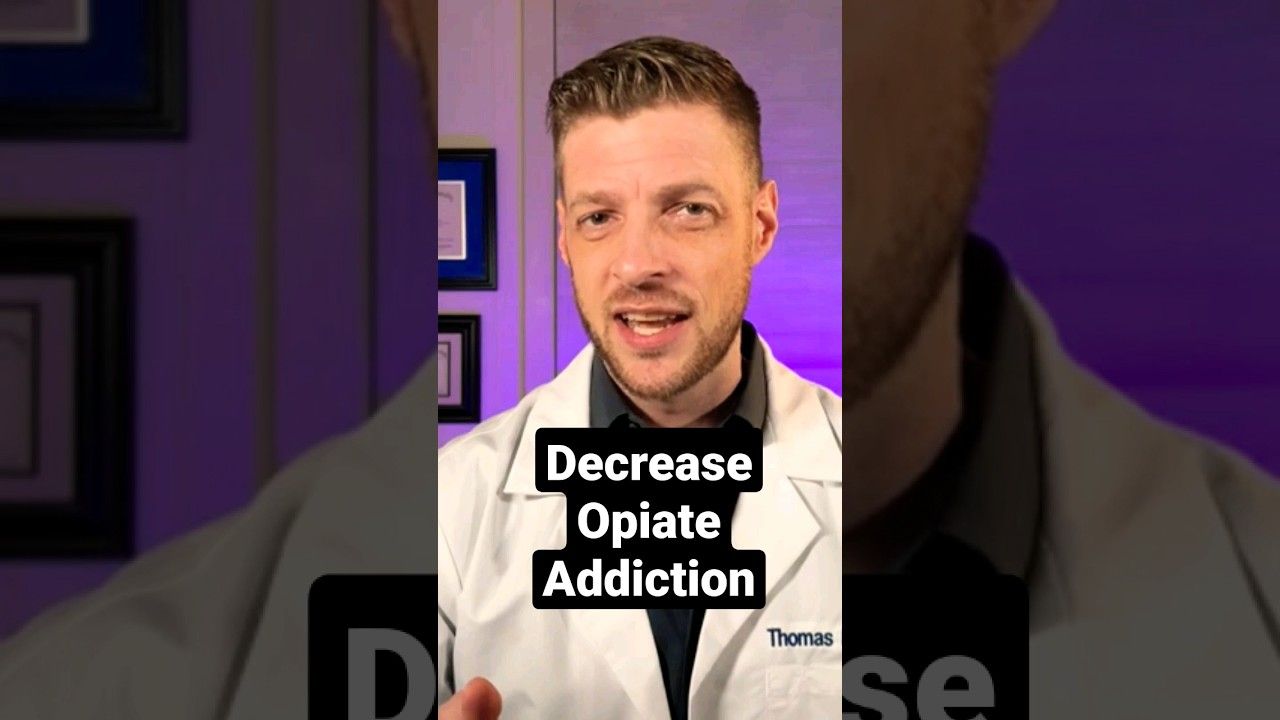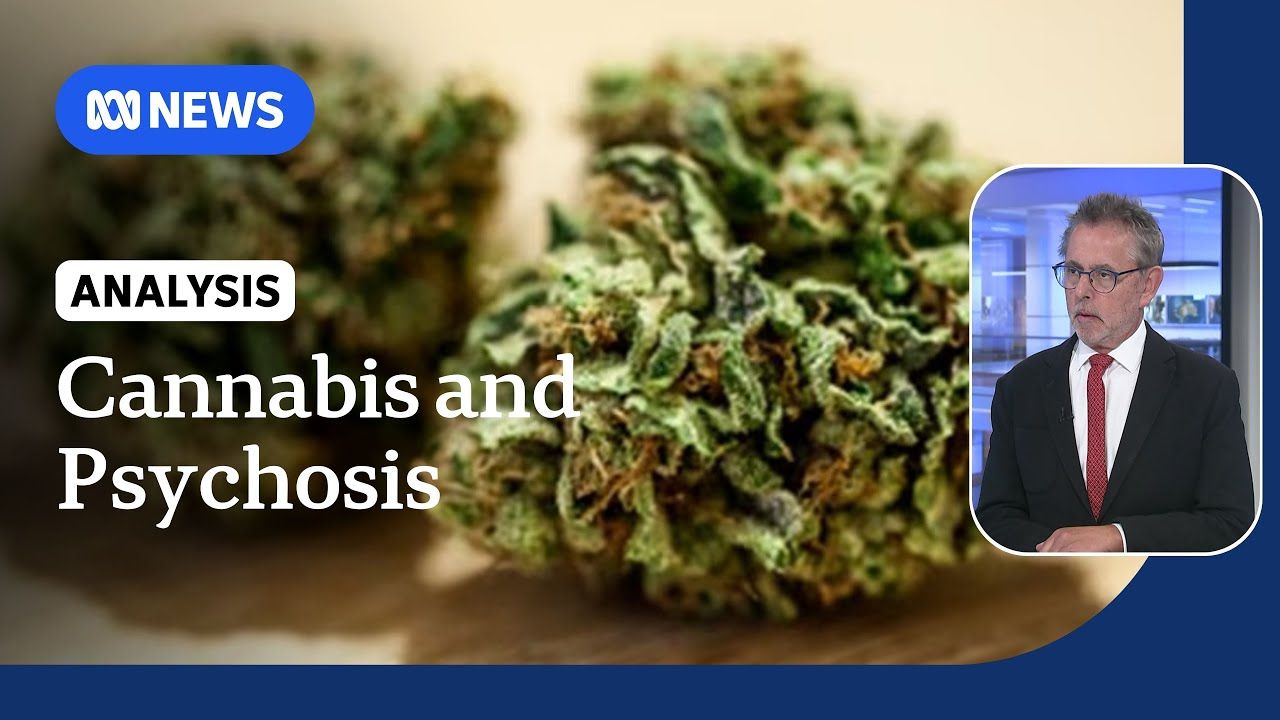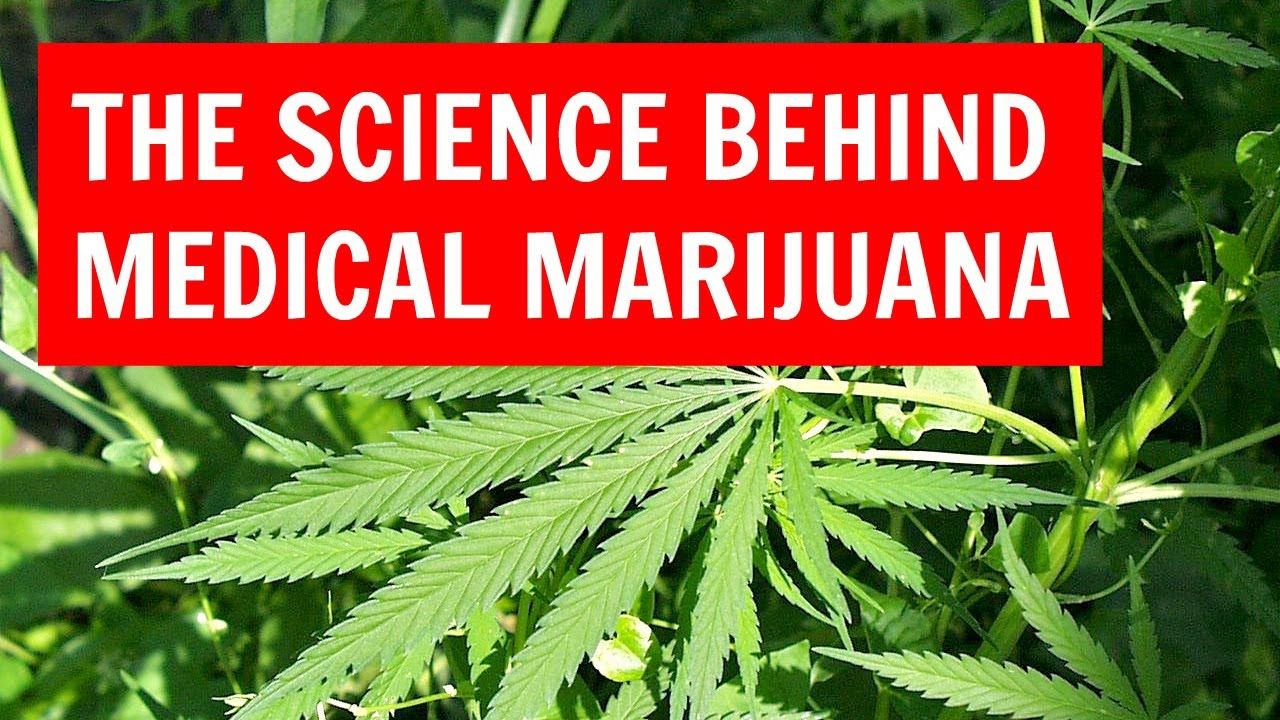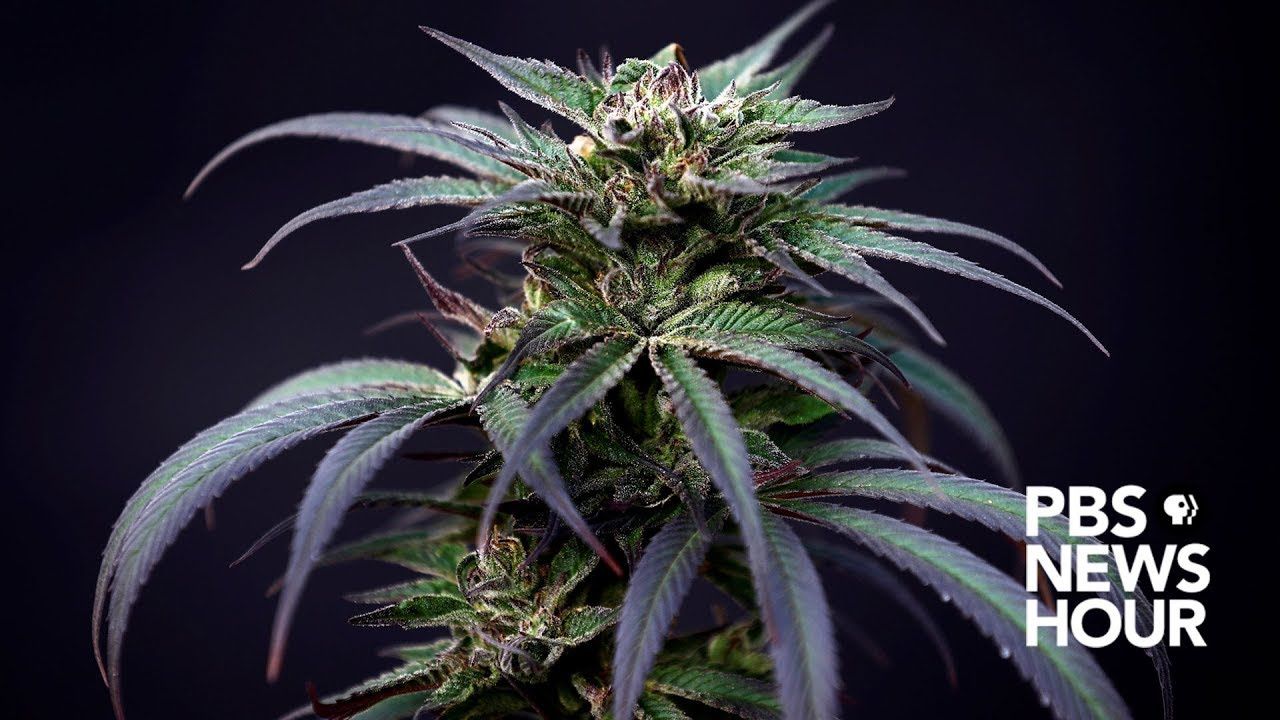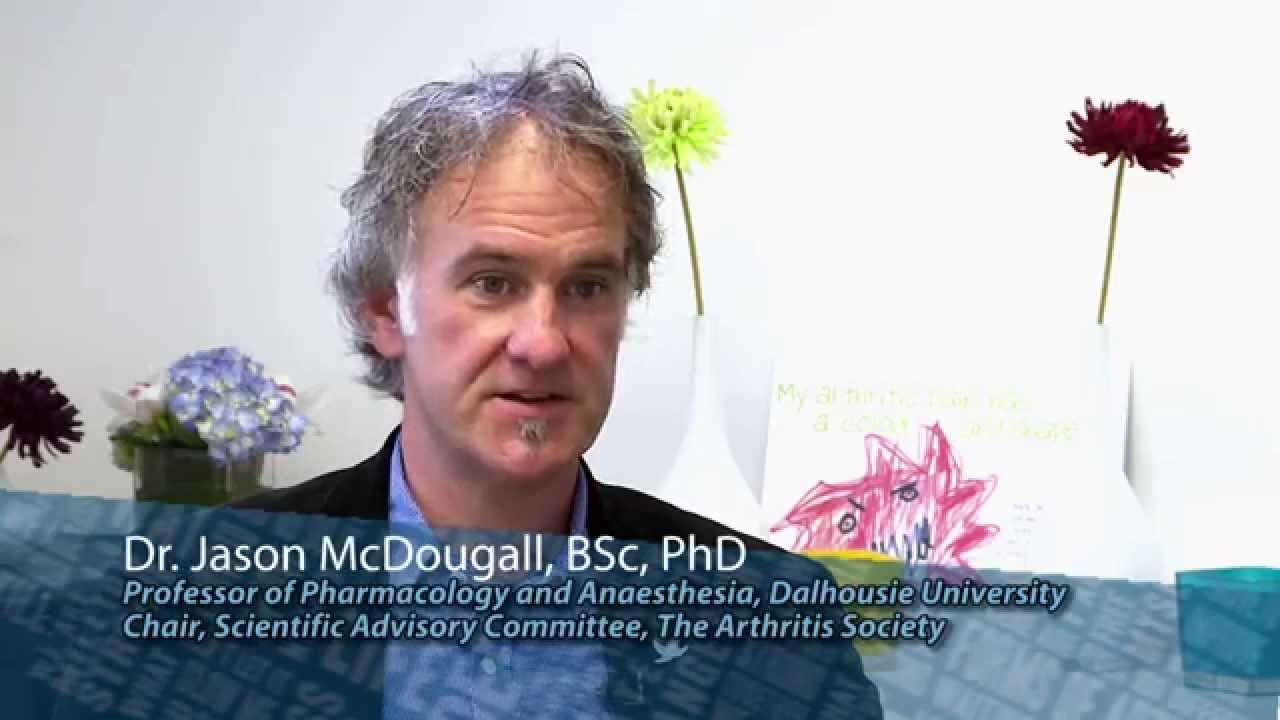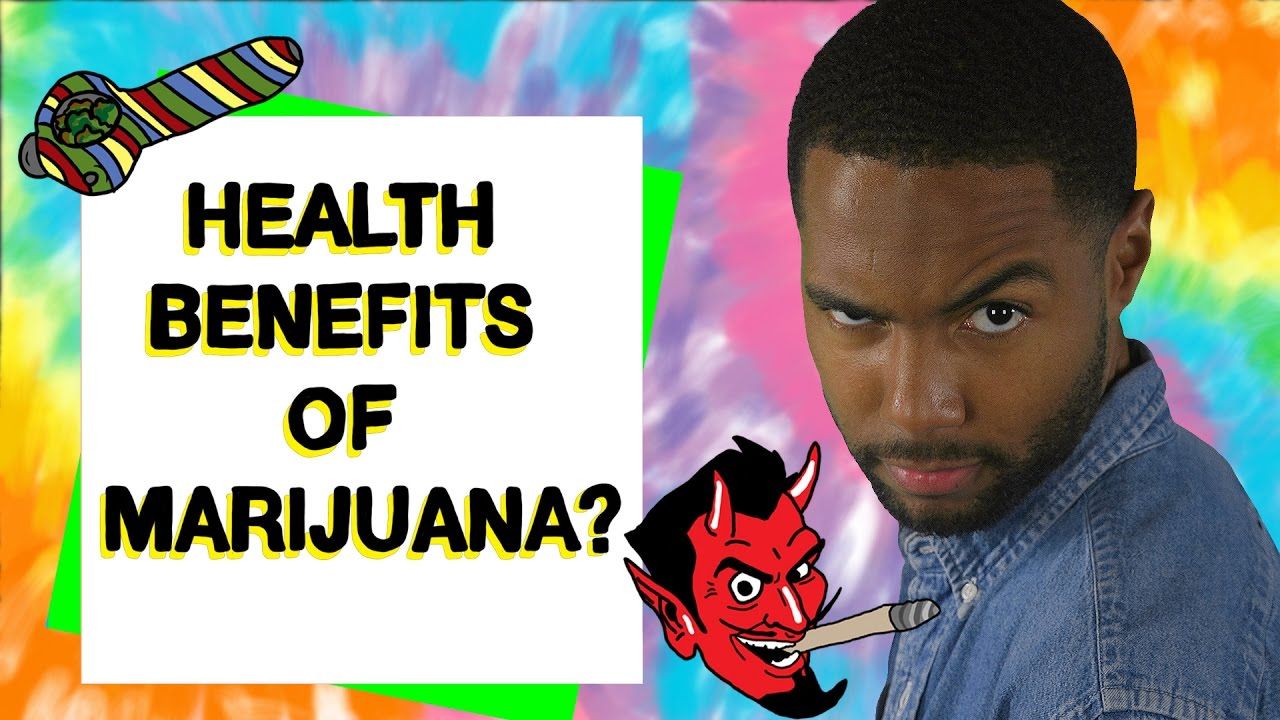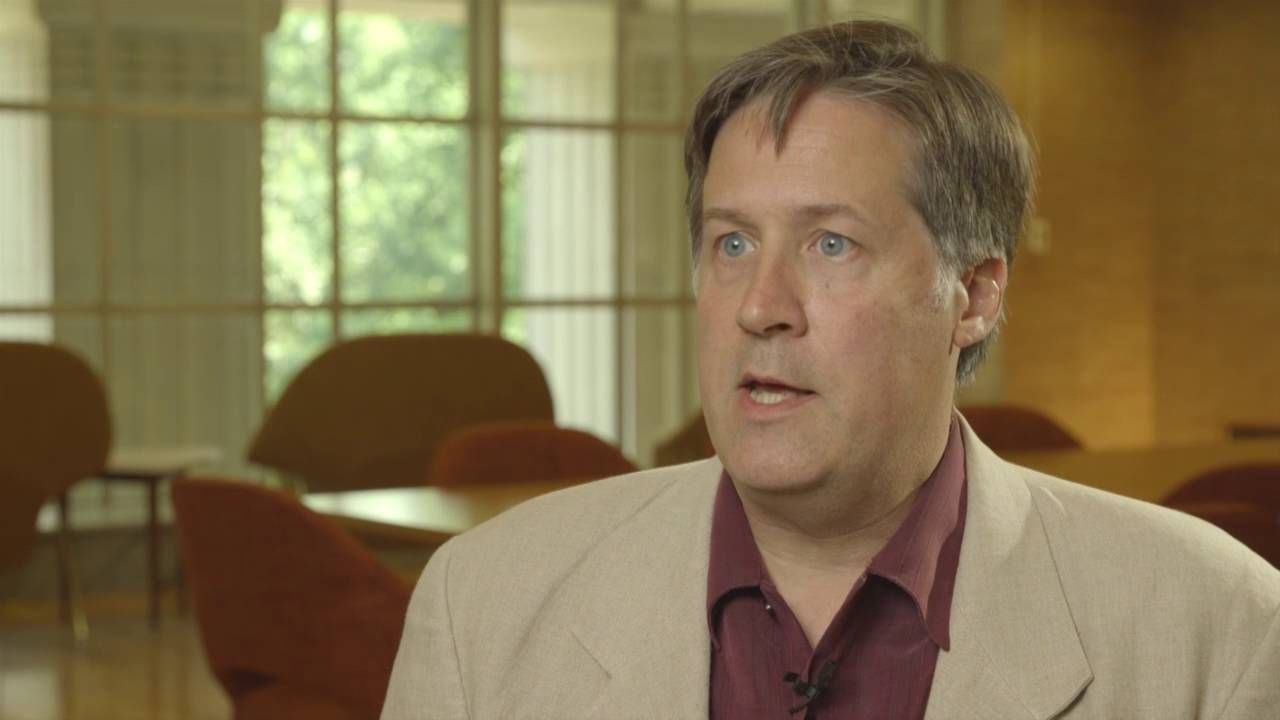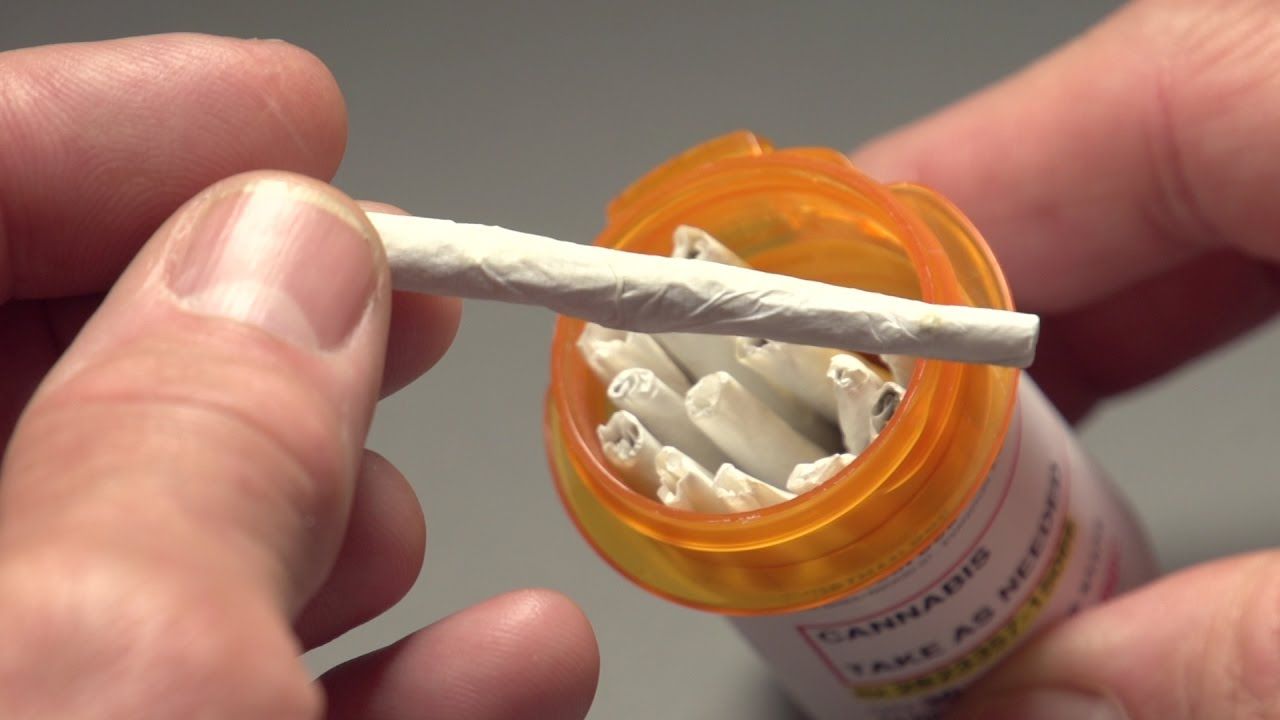Tag: research
International Researchers Are Sending Cannabis Seeds Into Space
Written by thcscout on . Posted in Seeds. No Comments on International Researchers Are Sending Cannabis Seeds Into Space
OccHealthSci seminar: Effects of cannabis use on cognition, mental health, and the stress response
Written by thcscout on . Posted in Medical. No Comments on OccHealthSci seminar: Effects of cannabis use on cognition, mental health, and the stress response
Decrease Opiate Addiction: Evidence Based Medicine- Cannabis #facts #shorts
Written by thcscout on . Posted in Facts. No Comments on Decrease Opiate Addiction: Evidence Based Medicine- Cannabis #facts #shorts
Here is the FREE full video: https://youtu.be/qaMW2-Gyexc
I separate scientific fact from fiction by reviewing powerful research to help give anyone the knowledge base to confidently discuss cannabis with others.
Our review today will help you understand if medical cannabis can improve a patient’s quality of life, bodily pain, their physical health functioning, as well as social functioning. If opiate-based pain medication may be reduced or even ceased with help from medical cannabis. And the important role medical cannabis may have in significantly impacting the opioid epidemic.
Thanks for watching and please subscribe for more videos- https://www.youtube.com/channel/UCm-40u0QpnwaBMpBhMeHwOQ
and ring the bell so our research is no longer limited from the general public! Love you all!
– Doctor Thomas Henke
Enjoy!
#youtubeshorts #viralshorts #facts
#cannabismedicine #cannabisnews
#CannabisEvidence #Cannabistalk #Cannbisfacts #CannbisAndPain #CannabisOpiates #CannabisHelp
Massive study finds link between cannabis and schizophrenia | ABC NEWS
Written by thcscout on . Posted in Medical. No Comments on Massive study finds link between cannabis and schizophrenia | ABC NEWS
Subscribe: http://ab.co/1svxLVE
Since legalisation, Cannabis Use Disorder has increased in Canada since legalisation and the rate of schizophrenia in relation to cannabis use has tripled.
ABC News provides around the clock coverage of news events as they break in Australia and abroad. It’s news when you want it, from Australia’s most trusted news organisation.
For more from ABC News, click here: https://ab.co/2kxYCZY
Watch more ABC News content ad-free on ABC iview: https://ab.co/2OB7Mk1
Go deeper on our ABC News In-depth channel: https://ab.co/2lNeBn2
Like ABC News on Facebook: http://facebook.com/abcnews.au
Follow ABC News on Instagram: http://instagram.com/abcnews_au
Follow ABC News on X (Twitter): http://twitter.com/abcnews
Note: In most cases, our captions are auto-generated.
#ABCNews #ABCNewsAustralia
Cannabis is here So let’s understand it with Todd Vanderah at the Wonder House SXSW23
Written by thcscout on . Posted in Facts. No Comments on Cannabis is here So let’s understand it with Todd Vanderah at the Wonder House SXSW23
Subscribe: http://go.arizona.edu/yt-subscribe
With the increasing legalization and use of marijuana throughout the country, we have a duty to ourselves and our society to understand its potential benefits and harms. Right now, it’s easier for a researcher to study cocaine or morphine than it is to study CBD, only one of more than 500 compounds found in the cannabis plant. What we do know comes from anecdotal stories or very limited studies. In this session, we’ll discuss the ups and downs of cannabis as found in the research that is happening now. We’ll also show you what the future could be if the Schedule 1 designation were removed and research appropriately funded, allowing us to design comprehensive studies and educate the public, as well as the medical profession, about the realities of marijuana.
Dr. Todd Vanderah is Professor and Chair of Pharmacology, as well as Joint Professor in the Departments of Neurology and Anesthesiology at the University of Arizona College of Medicine Tucson. He co-directs the MD/PhD Program and is the Director of the Comprehensive Pain and Addiction Center in the University of Arizona Health Sciences. His research interests include mechanisms of cancer pain, opioid use disorder, cannabinoid pharmacology, neuronal integration in pain pathways, neurochemical release during conditions of neuropathy, neuronal plasticity, addiction, as well as the discovery of novel targets for new medications to help in substance use disorder and chronic pain.
This talk was part of the University of Arizona SXSW Wonder House program on Saturday, March 11, 2023.
Follow University of Arizona:
Facebook: https://facebook.com/uarizona
Instagram: https://instagram.com/uarizona
Twitter: https://twitter.com/uarizona
Official Website: https://www.arizona.edu
UANews: https://news.arizona.edu
Wonder House: https://sxsw.arizona.edu
Arizona Comprehensive Pain and Addiction Center: https://cpac.arizona.edu/
For the latest on the University of Arizona response to the novel coronavirus, visit the university’s COVID-19 webpage: https://covid19.arizona.edu
Watch More:
POPULAR PLAYLIST 1: https://www.youtube.com/playlist?list=PLMrsYOKrP2J8UbSQJjKtzpc3qqrOk9iAC
POPULAR PLAYLIST 2: https://www.youtube.com/playlist?list=PLMrsYOKrP2J-b0q-u8M8buw9_BFdChltC
POPULAR PLAYLIST 3: https://www.youtube.com/playlist?list=PLCCE7A9F739BD5ADA
About the University of Arizona:
The University of Arizona, a land-grant university with two independently accredited medical schools, is one of the nation’s top 40 public universities, according to U.S. News & World Report. Established in 1885, the university is widely recognized as a student-centric university and has been designated as a Hispanic Serving Institution by the U.S. Department of Education. The university ranked in the top 20 in 2019 in research expenditures among all public universities, according to the National Science Foundation, and is a leading Research 1 institution with $734 million in annual research expenditures. The university advances the frontiers of interdisciplinary scholarship and entrepreneurial partnerships as a member of the Association of American Universities, the 66 leading public and private research universities in the U.S. It benefits the state with an estimated economic impact of $4.1 billion annually.
Land Acknowledgement
We respectfully acknowledge the University of Arizona is on the land and territories of Indigenous peoples. Today, Arizona is home to 22 federally recognized tribes, with Tucson being home to the O’odham and the Yaqui. Committed to diversity and inclusion, the University strives to build sustainable relationships with sovereign Native Nations and Indigenous communities through education offerings, partnerships, and community service.
#universityofarizona #arizona #university #UArizonaSXSW #SXSW #SXSW2023 #SXSW23
“Our hands were tied.” Millie’s Story (Cannabis for Kids, Part 1) | National Geographic
Written by thcscout on . Posted in Medical. No Comments on “Our hands were tied.” Millie’s Story (Cannabis for Kids, Part 1) | National Geographic
 Subscribe: http://bit.ly/NatGeoSubscribe
Subscribe: http://bit.ly/NatGeoSubscribe
About National Geographic:
National Geographic is the world’s premium destination for science, exploration, and adventure. Through their world-class scientists, photographers, journalists, and filmmakers, Nat Geo gets you closer to the stories that matter and past the edge of what’s possible.
Get More National Geographic:
Official Site: http://bit.ly/NatGeoOfficialSite
Facebook: http://bit.ly/FBNatGeo
Twitter: http://bit.ly/NatGeoTwitter
Instagram: http://bit.ly/NatGeoInsta
Click here to read more on what scientists are discovering about marijuana online in National Geographic magazine: http://ngm.nationalgeographic.com/2015/06/marijuana/sides-text
Some parents are turning to cannabidiol (CBD) oil, a cannabis extract with little or none of the psychoactive compound THC, to treat their children who have cancer and epilepsy. The oil is currently legal in more than a dozen U.S. states, but the supply is limited. The science also lags the law—dosing standards haven’t been set, and the effects of long-term use are unclear. Many doctors believe that more research is needed. In “Cannabis for Kids” a few parents share their experiences navigating the uncertainties of medical marijuana in America as they try to help their children.
“Our hands were tied.” Millie’s Story (Cannabis for Kids, Part 1) | National Geographic
https://youtu.be/XvwASmdTEOI
National Geographic
https://www.youtube.com/natgeo
The Science Behind Medical Marijuana
Written by thcscout on . Posted in Medical. No Comments on The Science Behind Medical Marijuana
Some consider it to be as dangerous as cocaine or heroin.
But did you know that marijuana also has many reported health benefits, many that have been backed by research?
But before we get into that – let’s start by looking at the makeup of marijuana itself.
Marijuana contains 2 key ingredients.
The main component is a psychoactive ingredient that is responsible for the “high” effects. It’s called tetrahydrocannabinol (THC), which is a psychoactive chemical.
THC attaches to cannabinoid receptors in parts of the brain that include thinking, memory, sensory and time perception. This is how THC plays a part in psychological effects you may have while under the influence of cannabis.
THC has also been used for it’s pain-relieving effects.
A study published in the Journal of Pain & Palliative Care Pharmacotherapy suggested that THC activates pathways in the central nervous system which work to block pain signals from being sent to the brain.
A pilot study published in clinical drug investigation talks about how THC helps with Post-traumatic stress disorder (PTSD). Because of its psychological effects on the brain, it has been therapeutic for some patients that have suffered from flashbacks, agitation and nightmares and other symptoms of PTSD
Another component of Marijuana is a non-psychoactive ingredient that is called cannabidiol (CBD). It reduces the effect that THC has, in other words it works against the “high effects”
CBD is thought to be responsible for turning off a gene by the name of ID-1, a protein coding gene that is suggested to help cancer cells spread throughout the body. Studies published in the journal Molecular Cancer Therapeutics, suggest that Cancerous cells make more copies of these genes than non-cancerous cells.
Some anecdotal cases show marijuana may also help in treating epilepsy – although this is yet to be comprehensively studied. But in the case of 8 year old Charlotte Figi, the use of marijuana that was low on THC but high on CBD had reduced her 300 seizures a week to just 1 seizure every 7 days.
So marijuana has other applications – other than just producing the ‘high effect’.
Are there any other science issues or phenomena you’d like us to explain? Let us know in the comments below!
Sources
http://www.livescience.com/24553-what-is-thc.html
http://www.medicaldaily.com/what-does-marijuana-do-your-brain-and-body-thc-interacts-memory-time-perception-273366
https://www.psychologytoday.com/blog/the-truisms-wellness/201510/medical-marijuana-the-science-behind-thc-and-cbd
http://www.leafscience.com/2014/02/23/5-must-know-facts-cannabidiol-cbd/
http://www.epilepsy.com/learn/treating-seizures-and-epilepsy/other-treatment-approaches/medical-marijuana-and-epilepsy
https://www.scientificamerican.com/article/evidence-supports-marijuana-as-medical-treatment-for-some-conditions-not-all/
https://www.scientificamerican.com/article/medical-marijuana-how-the-evidence-stacks-up/
http://www.bbc.com/news/uk-37318935
http://www.businessinsider.com/health-benefits-of-medical-marijuana-2014-4
http://www.cnn.com/2013/08/07/health/charlotte-child-medical-marijuana/
Song — Disfigure – Hollah! (https://www.youtube.com/watch?v=m0ZXoiIZ40U)
PTSD section B-Roll — https://www.youtube.com/watch?v=XfkmyKrQk-w
Thinking memory sensory time — Videoblocks
Pitcute of figi — http://www.weedist.com/2013/08/cannabis-cure-the-charlotte-figi-saga/
Producer: Stephanie
Director: Stephanie
Scriptwriter: Stephanie
Camera 1: Lucey
Camera 2: Samuel
Talent/s: William
Audio: Yvonne
Editor: Mashnoon
Now that you’ve been informed, do you still believe that marijuana is JUST a stoner drug?
2024 Arkansas Ballot Issue 3 – Medical Marijuana
Written by thcscout on . Posted in Medical. No Comments on 2024 Arkansas Ballot Issue 3 – Medical Marijuana
Issue 3 is a proposed constitutional amendment from Arkansans for Patient Access, a citizen-led ballot issue group seeking to make changes to the state’s medical marijuana amendment. Additionally, the proposal would prohibit legislators from making changes to constitutional amendments without voter approval. For more information, read our voter guide at http://uaex.uada.edu/issue3.
Download the full voter guide at https://www.uaex.uada.edu/business-communities/voter-education/docs/2024-Arkansas-Ballot-Issue-Voter-Guide.pdf
Does marijuana hurt or help your brain? Scientists rush to study the drug’s impact | Marijuana
Written by thcscout on . Posted in Facts. No Comments on Does marijuana hurt or help your brain? Scientists rush to study the drug’s impact | Marijuana
Stream your PBS favorites with the PBS app: https://to.pbs.org/2Jb8twG
Find more from PBS NewsHour at https://www.pbs.org/newshour
Subscribe to our YouTube channel: https://bit.ly/2HfsCD6
Follow us:
Facebook: http://www.pbs.org/newshour
Twitter: http://www.twitter.com/newshour
Instagram: http://www.instagram.com/newshour
Snapchat: @pbsnews
Subscribe:
PBS NewsHour podcasts: https://www.pbs.org/newshour/podcasts
Newsletters: https://www.pbs.org/newshour/subscribe
Medical Cannabis: What people with arthritis need to know
Written by thcscout on . Posted in Medical. No Comments on Medical Cannabis: What people with arthritis need to know
Read the press release: https://arthritis.ca/about-us/news-releases/media-releases/first-arthritis-society-funded-study-into-medical
Is Marijuana Actually Medicinal?
Written by thcscout on . Posted in Medical. No Comments on Is Marijuana Actually Medicinal?
SUBSCRIBE to Above the Noise: https://www.youtube.com/abovethenoise?sub_confirmation=1
ABOVE THE NOISE is a show that cuts through the hype and takes a deeper look at the science behind controversial and trending topics in the news. Hosted by Myles Bess and Shirin Ghaffary.
*NEW VIDEOS EVERY WEDNESDAY*
With the results of the 2016 election, use of medical marijuana is now approved in 28 states, plus Washington, D.C., but the plant itself is not approved as medicine by the Food and Drug Administration (FDA). It still remains federally illegal. Under the Controlled Substances Act, the federal government classifies marijuana as a schedule I drug– which is a category reserved for the most dangerous drugs, drugs that do not show any medical benefit. This classification makes it difficult for researchers to study, because drugs in this category are very tightly regulated.
So we wanted to know, what does the science say?
— Are there actually any medical benefits to marijuana?
There’s emerging research indicating that marijuana does have some medical benefits, particularly when it comes to chronic pain management and multiple sclerosis.
— Is marijuana approved by the FDA?
The plant itself is not approved, but the FDA has approved two pills containing THC, a compound found in marijuana. These pills are used to treat nausea from chemotherapy and symptoms associated with AIDS.
— What makes marijuana medicinal?
Marijuana contains a bunch of compounds called cannabinoids. These compounds affect the endocannabinoid system in the body and impact things like pain perception, motor movement, memory and cognition.
To join the conversation, visit KQED Learning’s blog for students called Do Now: https://ww2.kqed.org/learning/category/do-now/
SOURCES:
Cannabinoids for Medical Use: A Systemic Review and Meta-analysis
http://jamanetwork.com/journals/jama/fullarticle/2338251
Cannabinoid Receptors Where they Are and What They Do
https://www.ncbi.nlm.nih.gov/pubmed/18426493
Cannabis a Complex Plant: Different Compounds and Different Effects on Individuals
https://www.ncbi.nlm.nih.gov/pmc/articles/PMC3736954/
Blurred Boundaries: The Therapeutics and Politics of Medical Marijuana
https://www.ncbi.nlm.nih.gov/pmc/articles/PMC3538401/
The Center for Medicinal Cannabis Research:
http://www.cmcr.ucsd.edu/
Check out some of our other videos:
Top 4 Tips to Spotting Bad Science Reporting
https://www.youtube.com/watch?v=ZZYSBlLRxfs&t=6s
Follow KQED:
KQED: http://www.kqed.org/
Facebook: https://www.facebook.com/KQED/
Twitter: https://twitter.com/KQED?lang=en
Teachers follow KQED Learning
KQED Learning: https://ww2.kqed.org/learning/
Facebook: https://www.facebook.com/KQEDLearning/
Twitter: https://twitter.com/KQEDedspace?lang=en
About KQED
KQED, an NPR and PBS affiliate in San Francisco, CA, serves Northern California and beyond with a public-supported alternative to commercial TV, Radio and web media.
Funding for Above the Noise is provided in part by S.D. Bechtel, Jr. Foundation, David Bulfer and Kelly Pope, Horace W. Goldsmith Foundation, The Dirk and Charlene Kabcenell Foundation, The Koret Foundation, Gordon and Betty Moore Foundation, Smart Family Foundation, The Vadasz Family Foundation and the members of KQED.
Research Finds Medical Marijuana Lowers Prescription Drug Use
Written by thcscout on . Posted in Medical. No Comments on Research Finds Medical Marijuana Lowers Prescription Drug Use
Medical marijuana is having a positive impact on the bottom line of Medicare’s prescription drug benefit program in states that have legalized its use for medicinal purposes, according to University of Georgia researchers in a study published today in the July issue of Health Affairs.
A clearer look at how THC affects the brain
Written by thcscout on . Posted in Facts. No Comments on A clearer look at how THC affects the brain
What You Can DO With VAPED Weed + Hive 2.0 Review
Written by thcscout on . Posted in Baking. No Comments on What You Can DO With VAPED Weed + Hive 2.0 Review
MY Grower Gear & Head Shop: https://www.amazon.com/shop/influencer-945853a8
My Cannabis Tea Recipe Episode: https://www.theweedtube.com/cannabis-tea-cannatea-how-to-make-it/
Get the Hive 2.0: http://www.yocanonline.com/product/yocan-hive-2-0/
Have a pressing question for me? Need to get in touch? See my Club for more info: https://www.patreon.com/Lexsworld
The SECRET HASHTAG Is: GIVEAWAY OVER! WINNER WAS: YouTube User – Aaron Gray
My Facebook: http://www.facebook.com/lexsworld
My Twitter: http://www.twitter.com/lexsworld
Lex on Vimeo – https://vimeo.com/lexblazer
Lex on Bitchute – https://www.bitchute.com/channel/lex_blazer/
CONTEST RULES:
FREE TO ENTER, NO PURCHASE NECESSARY, NO MINORS
PRIZE: 1X Hive 2.0 Variable Voltage Vaporizer by YoCan
To enter:
1)You must find the secret hashtag in this description and leave it in a YouTube comment on a video of mine OTHER THAN THIS ONE (or tweet the secret hashtag at me).
Winning comment/tweet will be chosen with the help of a random number generator and replied to by me. Winner will also be announced on my FACEBOOK page & in this video description.
The replies & announcement to the winners and contest end will come on February 5, 2018 after 9 PM PST. Winner will have to verify they are of-age.
Legal Jargon (required as per YouTube):
Youtube is in NO WAY affiliated with this contest, other than the video being released on Youtube.
This giveaway is open internationally and all entrants must be 18 years of age (or older in some countries) to participate! The winner will be required to answer a simple skill-testing question so as not to consider this giveaway a lottery.
_
This giveaway is run in accordance to the YouTube Community Guidelines and YouTube Terms of Service.
https://www.youtube.com/yt/about/policies/#community-guidelines
KNOW A LOT ABOUT YOUR POT: Medicinal Marijuana
Written by thcscout on . Posted in Medical. No Comments on KNOW A LOT ABOUT YOUR POT: Medicinal Marijuana
Video Editing Software: Wondershare Filmora 9, Camtasia 2018, and Bitable. Music: “Jupiter the Blue” by Gillicuddy. “Buddy,” aka, “Jazz Piano” from iMovie. Voice-over recorded with Audacity, and a Yeti USB microphone.
References:
Atakan, Z. (2012). Cannabis, a complex plant: different compounds and different effects on individuals. Therapeutic advances in psychopharmacology, 2(6), 241-254.
Belendiuk, K. A., Baldini, L. L., & Bonn-Miller, M. O. (2015). Narrative review of the safety and efficacy of marijuana for the treatment of commonly state-approved medical and psychiatric disorders. Addiction science & clinical practice, 10(1), 10.
De Gregorio, D., McLaughlin, R. J., Posa, L., Ochoa-Sanchez, R., Enns, J., Lopez-Canul, M., … & Gobbi, G. (2019). Cannabidiol modulates serotonergic transmission and reverses both allodynia and anxiety-like behavior in a model of neuropathic pain. Pain, 160(1), 136.
Hayatbakhsh, M. R., Flenady, V. J., Gibbons, K. S., Kingsbury, A. M., Hurrion, E., Mamun, A. A., & Najman, J. M. (2012). Birth outcomes associated with cannabis use before and during pregnancy. Pediatric research, 71(2), 215.
Hall, W. (2015). What has research over the past two decades revealed about the adverse health effects of recreational cannabis use?. Addiction, 110(1), 19-35.
Lynskey, M., & Hall, W. (2000). The effects of adolescent cannabis use on educational attainment: a review. Addiction, 95(11), 1621-1630.
Mechoulam, R., & Parker, L. A. (2013). The endocannabinoid system and the brain. Annual review of psychology, 64, 21-47.
Pacher, P., Bátkai, S., & Kunos, G. (2006). The endocannabinoid system as an emerging target of pharmacotherapy. Pharmacological reviews, 58(3), 389-462.
Pollio, A. (2016). The name of Cannabis: a short guide for nonbotanists. Cannabis and cannabinoid research, 1(1), 234-238.
Solowij, N., Stephens, R. S., Roffman, R. A., Babor, T., Kadden, R., Miller, M., … & Vendetti, J. (2002). Cognitive functioning of long-term heavy cannabis users seeking treatment. Jama, 287(9), 1123-1131.
Stith, S. S., Vigil, J. M., Brockelman, F., Keeling, K., & Hall, B. (2018). Patient-reported symptom relief following medical cannabis consumption. Frontiers in pharmacology, 9.
Walsh, Z., Gonzalez, R., Crosby, K., Thiessen, M. S., Carroll, C., & Bonn-Miller, M. O. (2017). Medical cannabis and mental health: A guided systematic review. Clinical psychology review, 51, 15-29.
Whiting, P. F., Wolff, R. F., Deshpande, S., Di Nisio, M., Duffy, S., Hernandez, A. V., … & Schmidlkofer, S. (2015). Cannabinoids for medical use: a systematic review and meta-analysis. Jama, 313(24), 2456-2473.
https://www.grandviewresearch.com/press-release/global-medical-marijuana-market
How To Store Cannabis Seeds LONG-TERM + Where My Best Breeders Episode Went
Written by thcscout on . Posted in Seeds. No Comments on How To Store Cannabis Seeds LONG-TERM + Where My Best Breeders Episode Went
YOU can help me LOTS just by shopping at my Amazon Store…all grow gear & paraphernalia (like grinders) hand-picked by me: https://www.amazon.com/shop/influencer-945853a8
Silica Gel Packets: https://amzn.to/2IpIv6B (Amazon affiliate)
Have a pressing question? Need to get in touch with me? See my Club page for more info: https://www.patreon.com/Lexsworld
My Facebook – http://www.facebook.com/lexsworld
My Twitter – http://www.twitter.com/lexsworld
*best breeders episode is up on Theweedtube & Vimeo…will be on Bitchute soon!*
Lex on TheWeedTube – http://www.theweedtube.com/User/lexblazer/
Lex on Vimeo – https://vimeo.com/lexblazer
Lex on Bitchute – https://www.bitchute.com/channel/lex_blazer/
Doubts raised over marijuana’s medical benefits
Written by thcscout on . Posted in Medical. No Comments on Doubts raised over marijuana’s medical benefits
To read more: http://cbc.ca/1.4537039
»»» Subscribe to CBC News to watch more videos: http://bit.ly/1RreYWS
Connect with CBC News Online:
For breaking news, video, audio and in-depth coverage: http://bit.ly/1Z0m6iX
Find CBC News on Facebook: http://bit.ly/1WjG36m
Follow CBC News on Twitter: http://bit.ly/1sA5P9H
For breaking news on Twitter: http://bit.ly/1WjDyks
Follow CBC News on Instagram: http://bit.ly/1Z0iE7O
Download the CBC News app for iOS: http://apple.co/25mpsUz
Download the CBC News app for Android: http://bit.ly/1XxuozZ
»»»»»»»»»»»»»»»»»»
For more than 75 years, CBC News has been the source Canadians turn to, to keep them informed about their communities, their country and their world. Through regional and national programming on multiple platforms, including CBC Television, CBC News Network, CBC Radio, CBCNews.ca, mobile and on-demand, CBC News and its internationally recognized team of award-winning journalists deliver the breaking stories, the issues, the analyses and the personalities that matter to Canadians.
Debating the science of legal medical marijuana
Written by thcscout on . Posted in Medical. No Comments on Debating the science of legal medical marijuana
Medical Marijuana Facts
Written by thcscout on . Posted in Medical. No Comments on Medical Marijuana Facts
Check out more awesome videos at BuzzFeedBlue!
https://bit.ly/YTbuzzfeedvideo
https://bit.ly/YTbuzzfeedblue1
https://bit.ly/YTbuzzfeedviolet
GET MORE BUZZFEED:
https://www.buzzfeed.com
https://www.buzzfeed.com/videos
https://www.youtube.com/buzzfeedvideo
https://www.youtube.com/boldly
https://www.youtube.com/buzzfeedblue
https://www.youtube.com/buzzfeedviolet
https://www.youtube.com/perolike
https://www.youtube.com/ladylike
BuzzFeedBlue
Sports, video games, Unsolved & more epic daily videos!
MUSIC
Signs
Licensed via Warner Chappell Production Music Inc.
VIDEO
High Quality Marijuana Rotating Macro
Born_Ready_Films/Getty Images
Male and female scientist are working with a microscope and a tablet in a laboratory.
gorodenkof/Getty Images
Variety of Pills and Glass of Liquor Move Right Quick
revelpix/Getty Images
Brain rotating
Malekas85/Getty Images
Hands Moving X Ray Doctor Physician Cancer Tracing
elesaro/Getty Images
Medical marijuana pan right
Dan_Hedges/Getty Images
Cannabis plant seedling in flowerpot,Slow motion
Getza197487/Getty Images
Syringe Being Prepared For Use
franfrank/Getty Images
Lawyer exploring books in the working room. Shot on RED EPIC Cinema Camera.
MeloyanMedia/Getty Images
1934: Man smoking pipe outside house original backwards play art.
StockFilmdotCOM/Getty Images
Cannabis
helivideo/Getty Images
Medical Depression Silhouette Woman Despair Bipolar Disorder Depressed Hurting
liveoutloud/Getty Images
Medical bed dolly shot
Color_Red_Media/Getty Images
How To Make Cannabutter (Guide & Recipe)
Written by thcscout on . Posted in Baking. No Comments on How To Make Cannabutter (Guide & Recipe)
Now learn to make Cannabis Tea: https://www.youtube.com/watch?v=7YkmGUzWacQ
Learn more recipes with the Canna cookbook: http://amzn.to/1NxkyMh (amazon affiliate)
Get a Space Case Grinder AND support the show: http://amzn.to/2nQuYQ4 (amazon affiliate)
My FB: http://www.facebook.com/lexsworld
Welcome to Lexs World! How do you cook Cannabutter also known as budder? Whats the recipe? What’s the ratio of butter to weed? Today I’m going to show it all to you in a step-by-step guide….by the time you finish this instructional video, you will be able to do it too. Bare in mind; there are MANY different ways of doing this. This is just the way I personally deem reasonably fast, easy and produces good results.
Check out my off-topic, non-weed Channel: https://www.youtube.com/channel/UCMPEP9IYkN0AVBf0SJd-3iQ
Due to my show’s topic choice, my Adsense is restricted. If you like what I do, you can help me LOTS just by doing your shopping on Amazon through the applicable URL below (They sell grow gear too, often at the best prices!):
American & UK viewers: https://www.amazon.com/?&_encoding=UTF8&tag=lexs01a-20&linkCode=ur2&linkId=78bda3c8cfa21f9b14baa39f5c0be690&camp=1789&creative=9325
Canadian viewers: https://www.amazon.ca/?_encoding=UTF8&camp=15121&creative=330641&linkCode=ur2&tag=leswo0b-20
RECIPE:
Ingredients: Deep Tupperware container, rubber bands, cheesecloth, cooking pot, ground up Cannabis without stems, real unsalted butter.
Directions: Fill a small pot of water with enough water for it to fill the bottom 2 inches of the cooking pot. Set heat to high and boil the water. Turn heat down to medium and put in 1 stick of butter (125 g or half cup) for every quarter ounce of weed you plan on using. Allow 5 minutes for butter to melt. Turn heat down to low and put in Marijuana; stir frequently for 45 min-1 hour until liquid begins to take on a glossy, shiny texture. Cover Tupperware container with cheesecloth, secure with elastic bands….pour butter/water mixture through cheesecloth. Let cool 3 minutes. Take cheesecloth and squeeze any remaining butter out into the container. Place container in fridge overnight. In the morning, poke a hole in the butter along the side, then squeeze the Tupperware container until the water drains out. And voila! You have isolated the Cannabutter! Put into your favorite recipe!
Is Smoking Weed Bad For You? (The Health Effects of Marijuana)
Written by thcscout on . Posted in Facts. No Comments on Is Smoking Weed Bad For You? (The Health Effects of Marijuana)
Depending on who you ask, weed is either a cancer fighting wonder drug, or the devil trying to corrupt us all. And since there’s 22 states considering changing their marijuana laws, we wanted to get to the bottom of the question – is weed really bad for you??
[Sciq Intro]
Now, before we get started on the biological impacts of what happens when you get high/ blaze/burn/light up/scroll/bake (scroll? really?)
Let’s break the potential down side into three sections. The brain, the lungs, and cancer.
First off – the brain.
It is assumed that the use of marijuana by teenagers is harmful to brain development – the National Institute on Drug Abuse (NIDA) warns teens in particular to avoid marijuana as their little brains are still developing.
And weed’s main psychoactive ingredient THC definitely does act on the brain – it mimics the brain’s natural endocannabinoids, which regulate our physiological functions, such as appetite, pain, memory and mood. Now anything that affects the brain’s chemistry should be used very carefully -our brain is a well regulated machine and it is a bad idea to fu** with that system – for example if you take away our brains ability to regulate appetite you can get the munchies – which is why there’s a stereotype of the fat stoner.
But is smoking weed actually damaging your brain? Well your brain does adjust to anything you put into it, but to date, the studies that I’ve seen haven’t been able to prove any serious long term effects on the brain itself from moderate marijuana consumption. So on the danger spectrum with fatty foods here and heroin here, I’d say weed is definitely somewhere in THIS category.
Ok so the lungs. if we look at lung health – There is a huge disagreement about whether or not marijuana smoke is harmful to the lungs. For example, according to a 2014 study, there is no difference in the breathing of those who do not smoke at all and those who smoke marijuana regularly. But Lung.org contests that all smoke is harmful to the lungs. Basically, there is no clear, demonstrable evidence that pot-heads have anymore difficulty breathing than the average non-user.
Interestingly, there may be reason to believe that marijuana smoke actually has a *positive* effect on lung health (and I’m not joking). Though the causes are very unclear, there is research from a Nature Partner Journal to suggest that Forced Vital Capacity, the amount of air you can force yourself to hold, sees an overall increase in recreational marijuana-smokers – assuming they don’t smoke tobacco products as well.
Though the the American Lung Association continues to push for more research into this, and they should, the data suggests that there isn’t too much harm to the lungs as far as marijuana smoke goes.
And now Cancer
So we know that tobacco smoking can give you cancer, so is week smoking ALSO going to cause cancer?
If you look at the research so far, it looks like it’s actually the opposite – marijuana can save lives by helping cancer patients eat and sleep and recover quicker from the effects of cancer treatments. There is also *some* evidence that suggests marijuana may actually actually kill cancer cells! As this article on cancer.gov states: “cannabinoids may inhibit tumor growth by causing cell death, blocking cell growth, and blocking the development of blood vessels needed by tumors to grow.” But as they say: more research is needed.
SOURCES
http://search.proquest.com/openview/e046e44e7255ebedd256e8b0bae37bc4/1?pq-origsite=gscholar&cbl=2041920
http://www.lung.org/stop-smoking/smoking-facts/marijuana-and-lung-health.html?referrer=https://www.google.com/?referrer=http://www.lung.org/stop-smoking/smoking-facts/marijuana-and-lung-health.html
https://www.scientificamerican.com/article/casual-marijuana-smoking/
http://www.atsjournals.org/doi/full/10.1513/AnnalsATS.201407-333OC#.WBDWrSMrLwt
https://bmccancer.biomedcentral.com/articles/10.1186/s12885-016-2499-3
https://www.cancer.gov/about-cancer/treatment/cam/patient/cannabis-pdq#link/_13
https://www.washingtonpost.com/posteverything/wp/2015/04/28/how-for-profit-prisons-have-become-the-biggest-lobby-no-one-is-talking-about/?utm_term=.5f77f1ca1d34
http://www.veteranstoday.com/2014/03/27/pancho-villa-the-mexican-revolution-and-marijuana/
Presented by Jayde Lovell, Directed by Mizanur Rahman. Edited by Emily Lin. Script by Stephanie Slepian.
SCIQ ON THE YOUNG TURKS
Produced by Jayde Lovell and Bec Susan Gill. ScIQ is a partner of the The Young Turks Network.
Follow SciQ on Twitter: http://www.twitter.com/ScIQ_TYT
Follow SciQ on Facebook: https://www.facebook.com/sciq.tyt?ref=hl
Follow Jayde on Twitter: https://twitter.com/jaydelovell
Follow Jayde on Instagram: www.instagram.com/jaydelovell
Follow Bec on Twitter: https://twitter.com/becsusangill
Follow Bec on Instagram: https://instagram.com/becsusangill
CONTACT
For enquiries – please email bec@tytnetwork.com or jayde@tytnetwork.com



